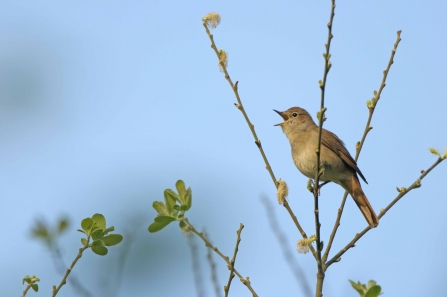The site has been recognised locally by conservation experts for its importance to wildlife, with 3 of the 25 singing males recorded in the county last year found here.
However local volunteer surveyors working on a new project to record data about nightingales have found that the site has now been bulldozed, just ahead of the bird’s breeding season.
A Hampshire & Isle of Wight Wildlife Trust spokesperson said: “This destruction of one of the last refuges for our nightingales is appalling. It’s doubly tragic that this has come to light just as local conservation organisations and volunteers are working together to identify where this wonderful bird can still be found, and protect it.
“We’re also deeply concerned that under government planning policy proposals, local wildlife sites like these will have even less protection. Cases like this show why the government must act to save our most precious species and take action against those who destroy the last few places they’re clinging on.”

